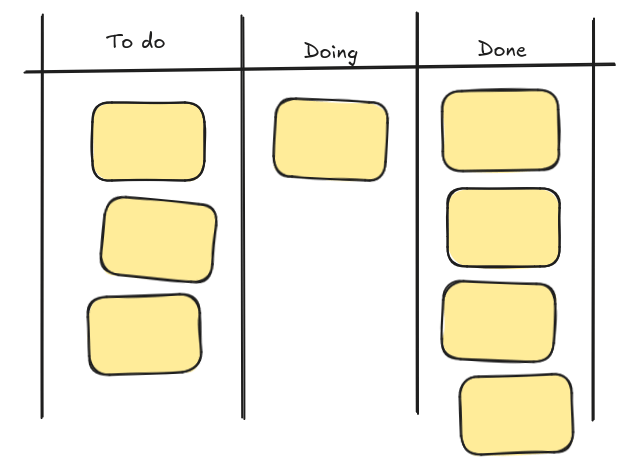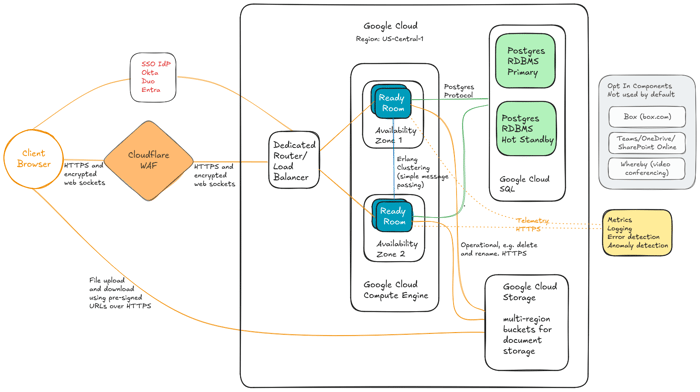Building on the momentum set by the last release of Ready Room, this week's release moves the world's foremost inspection readiness and management system to new heights.
Copy Request
By popular demand, we are pleased to announce support for copying inspection requests!
This is a simple to use, yet very powerful feature. To access it, simply click the "Copy / Stage ..." button in the lower left of a request ("Copy / Activate ..." if you're on the Staged board) to bring up the "copy request" form.
From this simple to use form, a user can copy the request to the Active or Staged boards of any inspection that they have access to, including the current one. (This replaces the old stage/activate functionality.) In addition, a user can optionally copy over any assignees or labels as well as individually selected attachments.

The ability to selectively copy attachments makes staged requests a lot more useful. Imagine, for instance, that you have a staged request containing the CVs of all senior management. But during the inspection, the inspector asks only for the CVs of C-Level executives. Last week, you would have been forced to either activate the entire request and remove any unwanted files or create a new request from scratch. Today, it's a simple matter of selecting the desired attachments and clicking copy. Moreover, should the inspector later ask for the remaining resumes, the staged request is still there ready to be used again! It's a copy not a move.
As noted, you can copy requests across inspections too, which is useful for staged requests that are common across inspections. Copying requests can also be used to split a too-broad inspection request into smaller independently deliverable components. Or you can use this functionality just to save some typing when one request is very much like another.
Unique IDs for Staged Request
By even more popular demand, staged requests now have IDs independent of active requests.
Prior to this release, if a customer staged, say, 20 requests ahead of an inspector's arrival, then the first actual request by an inspector would get the ID 21. No big deal, right? Apparently not. Having gaps in request IDs seems to drive some inspectors absolutely batty.
With the latest release, storyboards and requests are numbered independently starting from 1, with staged IDs prepended with the letter 'S.' So now those same 20 staged requests would be numbered S1, S2, ... S20, and active requests will be numbered 1, 2, 3 etc.
Keep in mind that you may still have gaps in your deliverables if, for instance, you delete a request or release requests out of order. However, you will no longer have large gaps caused by staging a significant number of anticipated requests ahead of the inspection.
Importantly, this change does not effect existing requests. If an inspection has staged requests numbered 3, 4, and 5, they remain numbered 3, 4, and 5. However, any new requests created in this inspection will work as just described.
Enhanced Request Creation from Storyboards
Now that staged requests no longer consume active IDs, and now that we can also selectively copy requests from staged to active, we have changed how requests get created from storyboards; creating them as staged requests instead of active. This gives you the opportunity to split the storyboard-derived request into multiple active requests if desired.
In addition, instead of copying the storyboard content into the request's response field that users would then have to edit. It now gets copied into a new field not visible to inspectors from which you can paste the relevant bits into the response field as desired. This new storyboard-content field is not shown if no such content exists and it is collapsible so as not to clutter the UI.
Storyboard and Inspection Specific Labels
Ready Room now allows customers to create three classes of labels: those that apply only to storyboards, those that apply only to inspection requests, and those that apply to both.

The intent here is to allow for labels that are meaningful only to inspection requests, such as "Urgent" (storyboards are rarely urgent), to not clutter up the storyboard UI and vice versa.
All existing labels are classified as applying to both inspection requests and storyboards. Users may want to revisit those and move them to one or the other. Note, however, that we err on the side of caution, and will not remove labels already associated with a request or storyboard, even if that label no longer applies.
Filter by Time
We've added a new inspection filter so that users can filter the current board to requests created since a specified time. For simplicity, the specified times are limited to the following thresholds: 1 hour, 2 hours, 4 hours, 8 hours, 12, hours, 24 hours, 3 days, 7 days, and 2 weeks. As always, filters are additive, making it trivial to show, say, all requests added in the last hour containing an "Urgent" tag.
Streamlined Onboarding
If your employer has enabled single sign-on and you are inviting someone from your organization into Ready Room, those new users no longer need to accept their invitations before they can login. They will still receive a welcome email asking them to set their profile (i.e. time zone) correctly, but they don't need to just to login. This should remove roughly 90% of all support calls.
Note, new users that you invite from outside your organization; e.g. from labs, CROs, and the like, will still need to accept their invitations as before since they need to set their name, password, and time zone.
Storyboard Performance
Rendering a long (hundreds) list of storyboards was taking an inordinate amount of time (seconds), especially when switching to the table view. This has been corrected and now storyboards render as expected.



